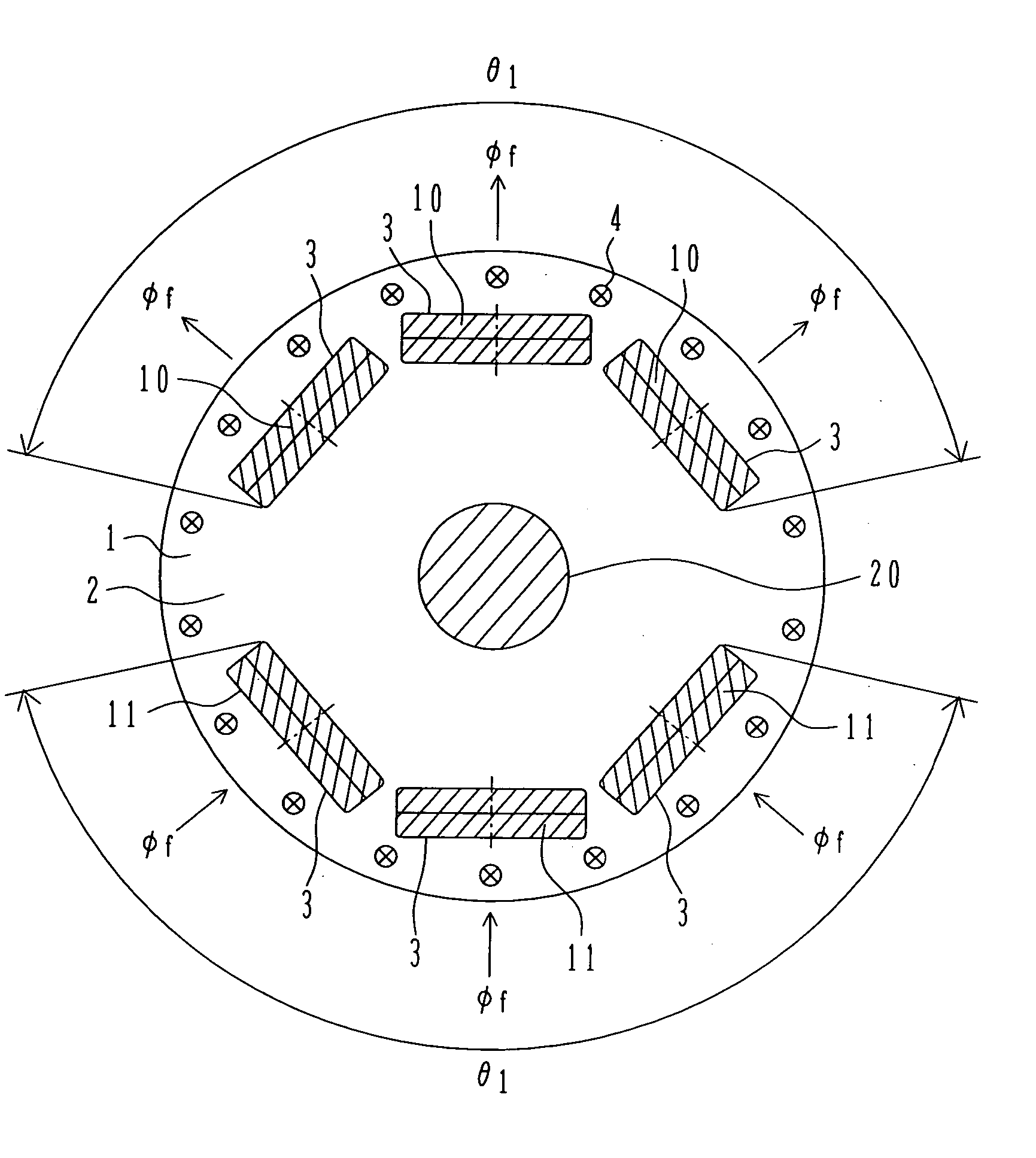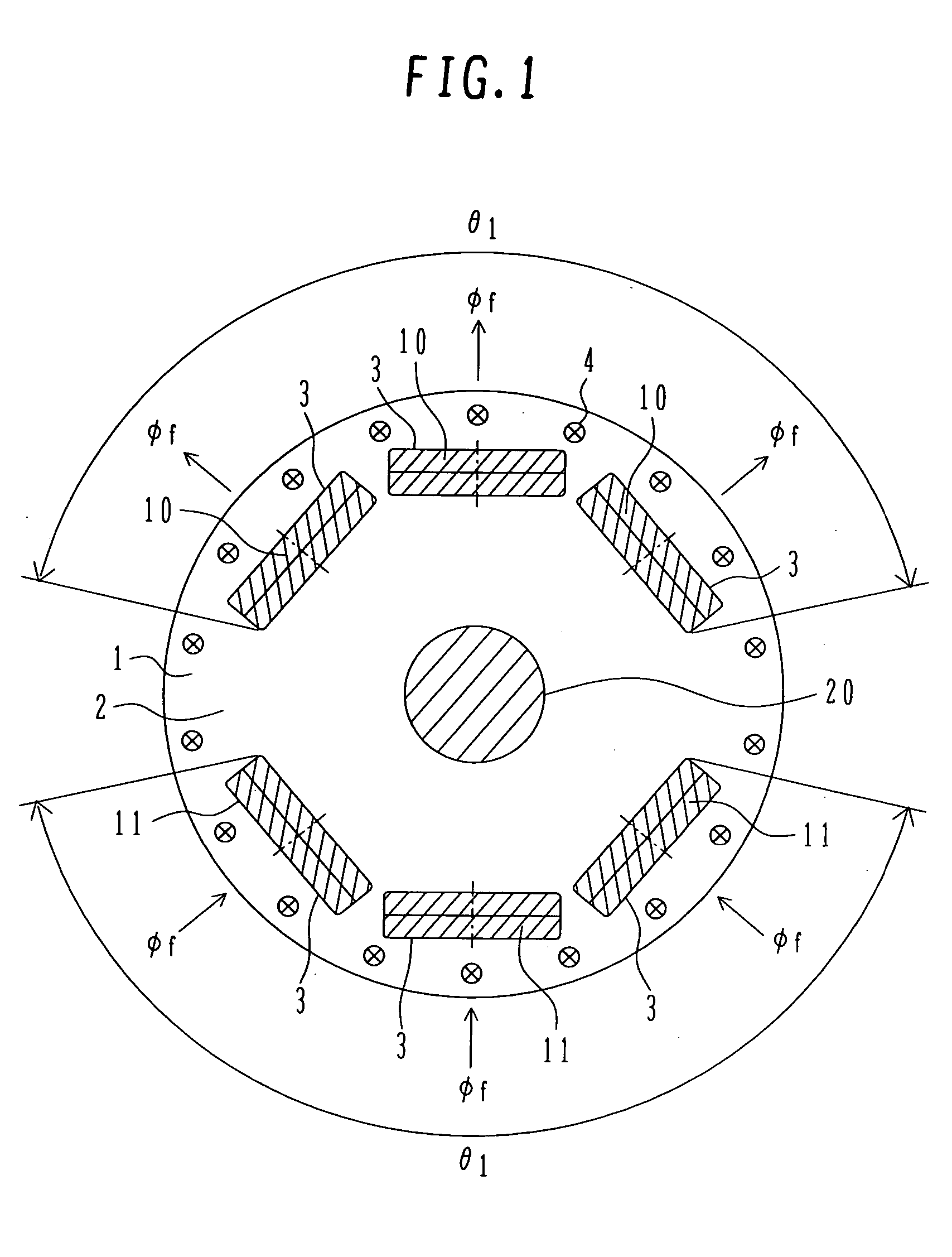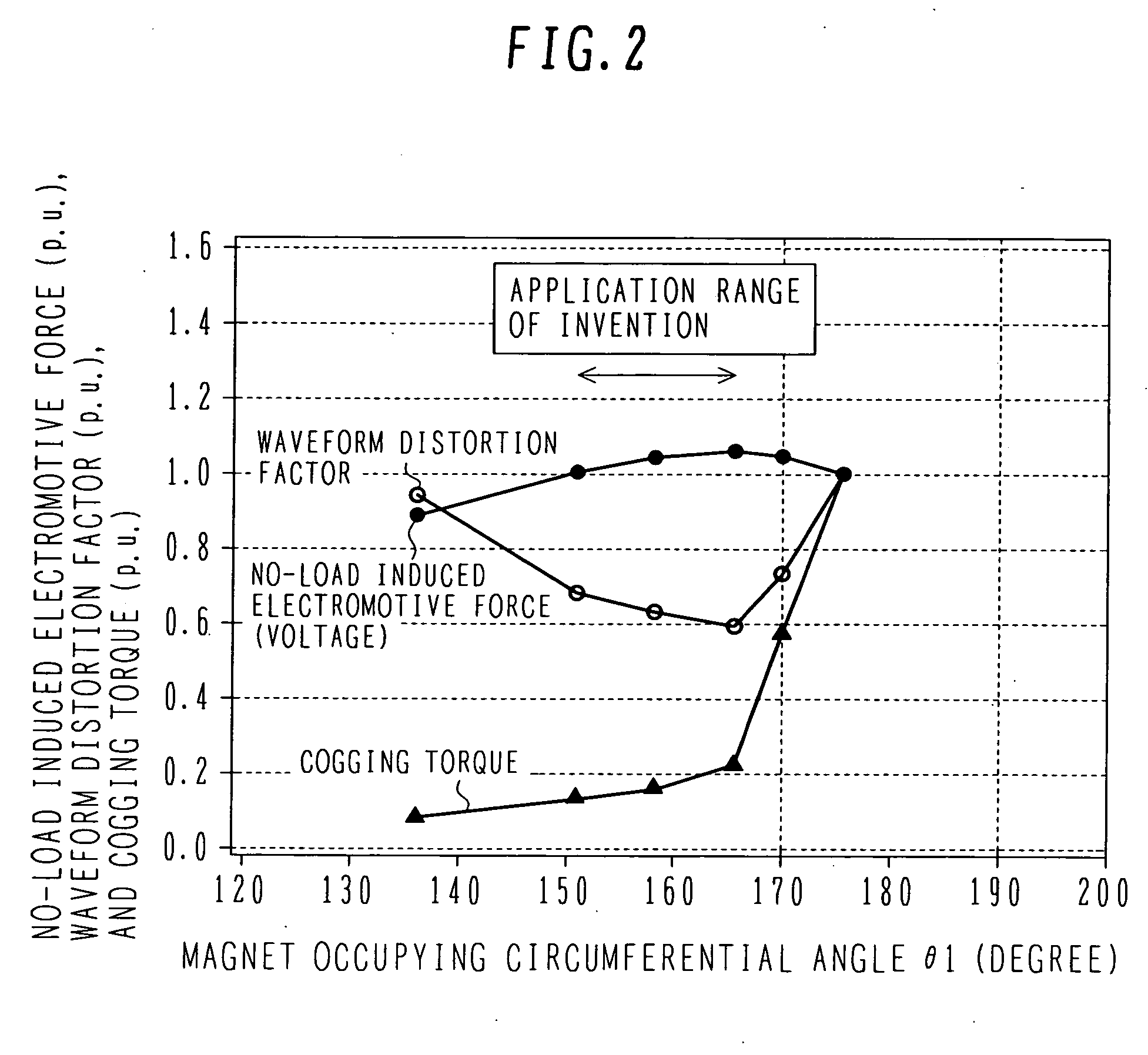Rotor of permanent magnet rotating electric machine
a rotating electric machine and permanent magnet technology, applied in the direction of dynamo-electric machines, magnetic circuit rotating parts, magnetic circuit shape/form/construction, etc., can solve the problems of reduced inability to obtain satisfactory magnetic flux distribution, and reduced magnetic flux distribution. , to achieve the effect of improving the efficiency of rotating electric machine, increasing the fundamental wave effective value of induced electromotive force, and satisfying magnetic flux distribution
- Summary
- Abstract
- Description
- Claims
- Application Information
AI Technical Summary
Benefits of technology
Problems solved by technology
Method used
Image
Examples
Embodiment Construction
[0017] Embodiments of a rotating electric machine according to the present invention will be described below with reference to the drawings in connection with the case of the rotating electric machine having two poles.
[0018]FIG. 1 shows the structure of a rotor of a permanent magnet rotating electric machine as one embodiment of the rotating electric machine according to the present invention. A rotor 1 comprises a rotor core 2, slots 3 in which magnets are disposed, N-pole permanent magnets 10, S-pole permanent magnets 11, a rotary shaft 20, and a plurality of damper windings 4 circumferentially disposed outside the magnets 10, 11. The rotor core 2 is a cylindrical laminated core formed by laminating a plurality of thin iron sheets one above another, which are each punched in a predetermined shape.
[0019] The N-pole permanent magnets 10 and the S-pole permanent magnets 11 are each a magnet generating magnetic flux Φf and are grouped in unit of three magnets per magnetic pole. Thos...
PUM
 Login to View More
Login to View More Abstract
Description
Claims
Application Information
 Login to View More
Login to View More - R&D
- Intellectual Property
- Life Sciences
- Materials
- Tech Scout
- Unparalleled Data Quality
- Higher Quality Content
- 60% Fewer Hallucinations
Browse by: Latest US Patents, China's latest patents, Technical Efficacy Thesaurus, Application Domain, Technology Topic, Popular Technical Reports.
© 2025 PatSnap. All rights reserved.Legal|Privacy policy|Modern Slavery Act Transparency Statement|Sitemap|About US| Contact US: help@patsnap.com



